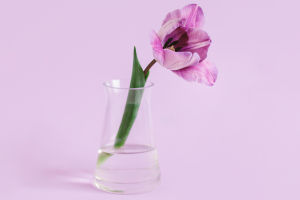Lily is a perennial herbaceous plant with high ornamental and medicinal value. Its elegant and beautiful flowers, accompanied by a rich fragrance, have been widely adored throughout the world since ancient times.
This article will provide a detailed introduction to lilies from the aspects of their varieties, cultivation, symbolic meanings, and medicinal value.
Firstly, there are numerous types of lilies, with more than 100 known species worldwide, mainly distributed in the temperate regions of the Northern Hemisphere. Based on their origin and morphological characteristics, lilies can be roughly categorized into several groups, including Asiatic lilies, Oriental lilies, trumpet lilies, and American lilies.
Asiatic lilies are widely cultivated, with a relatively short blooming period but strong adaptability, making them common in landscaping. Oriental lilies, on the other hand, have larger flowers, a stronger fragrance, and a longer blooming period, making them a staple in the cut flower market. Different types of lilies not only differ in appearance but also in their growth environment, blooming season, and maintenance requirements.
The cultivation of lilies is relatively simple but requires attention to environmental adaptability. Lilies prefer well-drained, sunlight-abundant soil, and using breathable sandy soil can help promote healthy root growth. The planting depth is also a key factor.
Generally, bulbs should be planted at a depth two to three times the height of the bulb to ensure stability and root health. Although lilies are relatively cold-resistant, in extreme climates, protective measures such as covering with thin film or straw are necessary to help the plants safely overwinter.
Lilies typically bloom in spring and summer, with trumpet-shaped flowers in various colors, including white, pink, yellow, and orange. The flowers usually have six petals arranged symmetrically, with prominent stamens and a pleasant fragrance. This graceful appearance has made lilies a symbolic plant in many cultures. In the West, lilies are often associated with purity and holiness.
Beyond cultural symbolism, lilies have long been recognized for their medicinal value. Modern pharmacological research has found that lilies are rich in bioactive substances, such as polysaccharides, saponins, and flavonoids. These compounds have antioxidant, anti-inflammatory, and immune-regulating properties, offering potential medicinal benefits in preventing cardiovascular diseases and boosting immunity.
In addition to their medicinal functions, lilies are also commonly used as a culinary ingredient. The fresh bulbs of lilies are tender and crisp, rich in starch, protein, and vitamins. They can be prepared in various ways, such as steaming, boiling, or stir-frying, and are often used to make desserts or as an ingredient in vegetable and meat dishes.
The beauty and practicality of lilies have made them popular worldwide. However, caution is needed when cultivating and consuming lilies, as some varieties may have toxic properties. Lily pollen can cause allergic reactions in some individuals, particularly those with pollen allergies, who should avoid contact. Furthermore, certain lily species are highly toxic to cats, and ingestion can cause acute kidney failure. Therefore, households with pets should avoid growing lilies indoors.
In conclusion, lilies, as a plant with both ornamental and medicinal value, play important roles in gardening, culture, cuisine, and medicine. While admiring their elegant blossoms, we should also appreciate the rich meaning and practical value they embody. From ancient times to today, lilies have captivated countless hearts with their unique charm, and they will undoubtedly continue to flourish across various fields in the future.


